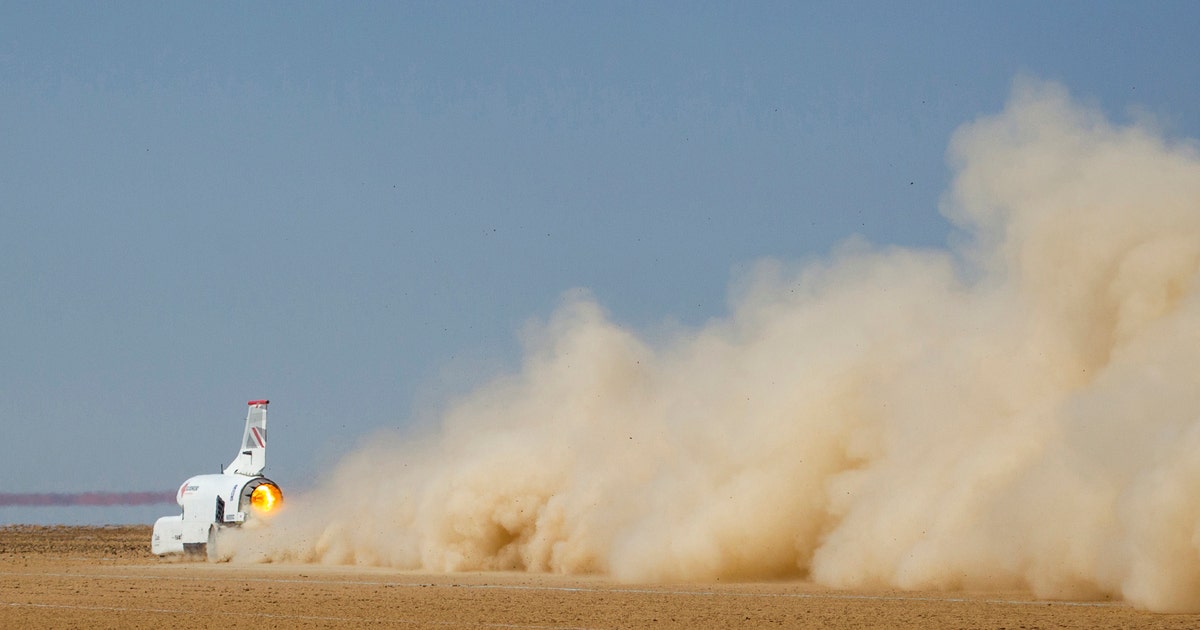Bloodhound aims to be world’s fastest car in South Africa


JOHANNESBURG (AP) — An earthbound jet known as the Bloodhound became one of the world’s 10 fastest cars this week, on target for its goal to set a new land speed record.
“The feeling in this car is fantastic,” driver Andy Green told The Associated Press on Friday, days after the Bloodhound hit 501 mph (806 kph) in South Africa’s northern desert. “It’s quite lively. … The car is just doing brilliant work.”
Bloodhound’s next goal is to reach 550 mph (885 kph), possibly in the coming week. Powered by a Rolls-Royce EJ200, the same jet engine used in the Eurofighter Typhoon fighter jet, the car hurtles so fast across the salt pan track that a twin parachute is needed to bring it to a halt.
With the aerodynamic lines of a rocket, Bloodhound was designed and built in Britain by Grafton LSR. It was taken apart and air-freighted to South Africa, where it was reassembled. Its crew is working flat out in South Africa to refine all aspects of the car.
“The whole team has been on a buzz since arriving here a few weeks ago to knock out the teething problems,” said Green, 57, a jet fighter pilot for Britain’s Royal Air Force who says his hobby is driving straight-line racing cars. “We’re working together to get the car up to top speed.”
Over the next few weeks, Green and the Grafton team hope to get Bloodhound up to 600 mph (965 kph). Over the next year, they aim to break the world land speed record of 763 mph (1,228 kph). Green set that record in a different car in 1997.
Ultimately, Bloodhound’s jet engine will be boosted by a rocket engine with the goal of safely reaching 1,000 mph (1,609 kph), faster than the 767 mph (1,234 kph) speed of sound.
Green reckons that South Africa’s Hakskeen Pan is the best place to reach that speed. In northwestern South Africa, near the border with Namibia, the dry lake has an alkali playa, or baked mud, surface and has been painstakingly cleared of all rocks.
The government of the Northern Cape province hired more than 300 people of the local Mier community in a yearslong project to clear 16,500 tons (15,000 metric tons) of stone from the 12-mile-long (19-kilometer-long) track, said Bloodhound spokesman Jules Tipler.
“They’ve created the best straight-line high-speed testing track in the world,” Green said, adding that it surpasses the Black Rock Desert track in Nevada in the United States.
“This track is harder, it has more consistency and the weather is much better. We have six months with clear weather to test here.”






